The science backs up the need for natural light, too. Studies have found that improving the interior lighting of a home can help people recover from oversleeping, overeating and energy loss. This is equally critical given how many people do at least some of their work from home, as work disturbances are shown to be less frequent the better the lighting in the home. Interior design and media personality Georgia Ezra says “Without sunlight in our homes, we are exposing ourselves to the risk of depression, anxiety and a number of other negative symptoms. I think natural light is the best source in all circumstances within our offices, homes, and interior spaces. Our bodies respond to it in such a positive way, and we need natural daylight to function - just as we need darkness to go to sleep.”
It is therefore important that people who are looking to improve their home spaces consider how they can get more natural light into the home as part of their renovation or building plans. There are many ways to work with the space in your home to let in and utilise as much natural light as possible, and thus improve both the aesthetics and livability of the space. When designing your home, or looking to renovate your existing spaces, take these ideas into account; you’ll be happier, and save plenty of money in the long term in doing so.
1Lighten the environment with lots of white light
Natural light is absorbed by dark colours, meaning that if you’ve got a lot of darkness in a room, the impact that any natural light you let in will be greatly reduced. At the very least, you should ensure that your walls and ceiling are of a light colour; whether that’s white, or a soft pastel, like a yellow or beige. Georgia Ezra, who owns interior architecture firm GABBE, says that in order to brighten your space, “Style and accessorise with neutral and lighter colours, and paint your ceiling a shade lighter than the walls to make the ceiling height look taller.” You might want to have darker colours for pieces of furniture, and of course, that’s okay! Once you’ve created a room that properly accommodates natural light, a black sofa or similar becomes a stand out object, drawing attention to it, and giving the space a modern feel.
As you can see in the image below, the amount of light that could be let into the space is limited by its construction, as it has dark wooden floors. In order to create an airy, open atmosphere, the rest of the furniture and walls have been painted white, except for the dramatic table that sits in the middle of the room. According to Georgia, “When introducing light and airy colours, you completely change the mood of the home to a clear, clean and uplifting space. However, in certain circumstances I like to utilise a more moody palette by painting the walls and ceiling a deeper colour, as well as using a dim pendant or lamp shade to light the room.” Having both light and dark elements in a room adds interest and depth to any enclosed space.
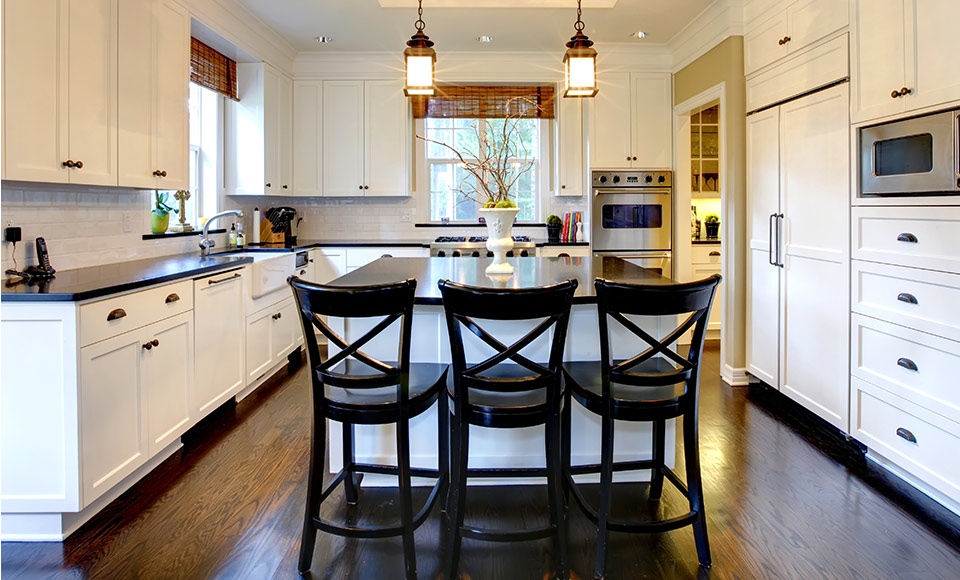
2If you’re going to use colour, use natural colours that will enhance the impact of natural light
In terms of aesthetics, natural light does a better job of bringing out colour than artificial light can. To create a natural look in the home, use natural colours wherever you can. Wooden floors and bookcases, tan-coloured sofas and marble tabletops or tiles are all good options. Just as in nature, the natural light of the sun will draw these colours out so that they look subtly wild and naturalistic, which in turn creates an environment that people tend to be comfortable and relaxed in.
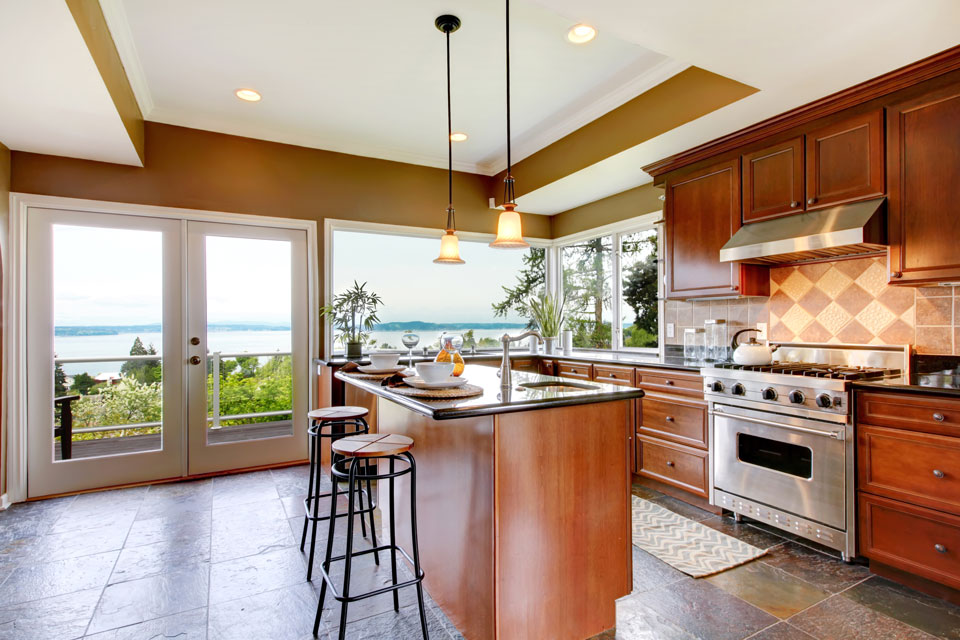
3Make good use of reflective objects
Another easy trick for increasing the impact of natural light in a room is to make good use of mirrors, or other highly reflective objects. These objects reflect light around the space, helping the whole environment to look bright, and have the added benefit (when placed well around the room) of making it look bigger and more spacious. Georgia, who also owns exotic tile specialist Tiles of Ezra, recommends “Introducing large mirrors that bounce the light around the room.” For example, at the end of a long room, a mirror placed on the wall can help the room look longer. Or, use mirrors that are directly placed opposite one another to create an endless series of reflections that creates the perception of depth. Experiment with your mirrors and see what positions catch the most light, and then reflect it.
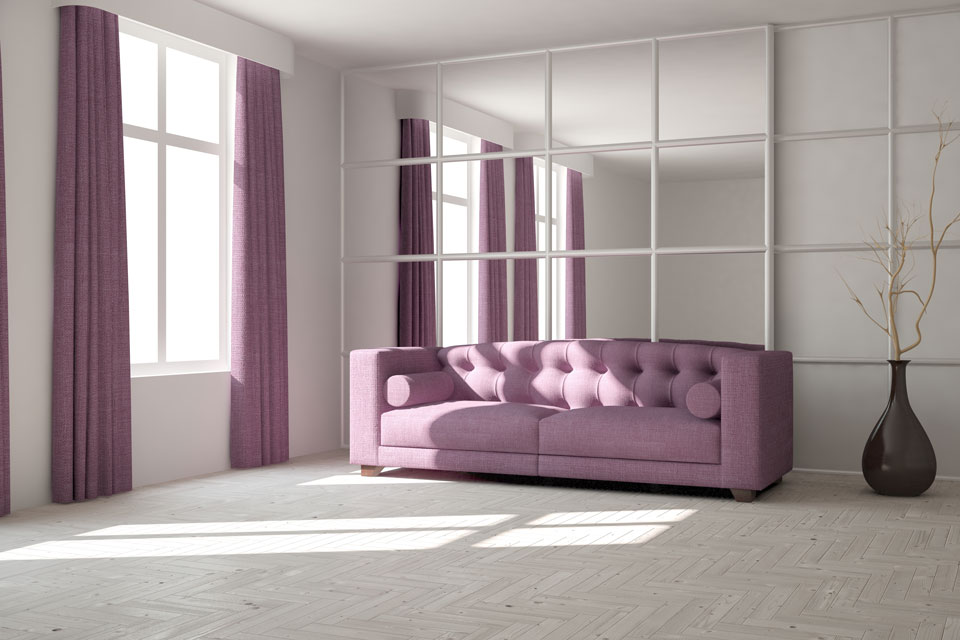
It’s not just mirrors that work for this purpose, either. Highly reflective surfaces, such as highly polished wood, or polished metallic objects, such as door handles or other objects, can also achieve this effect, such as the bath and taps in this modern bathroom.

4Install skylights
Another simple project is to have skylights, or Tubular Daylighting Devices (TDDs), installed in the home. While a large skylight might let in a little too much sun, and be quite glary at various points in the day (and no one wants a room they can’t use for six hours of the day), TDDs are small, cylinder-shaped skylights that have diffused or glazed bottoms to prevent the full force of a sunbeam entering the room. Instead you simply have a natural glow, not unlike having a conventional light on during the day.
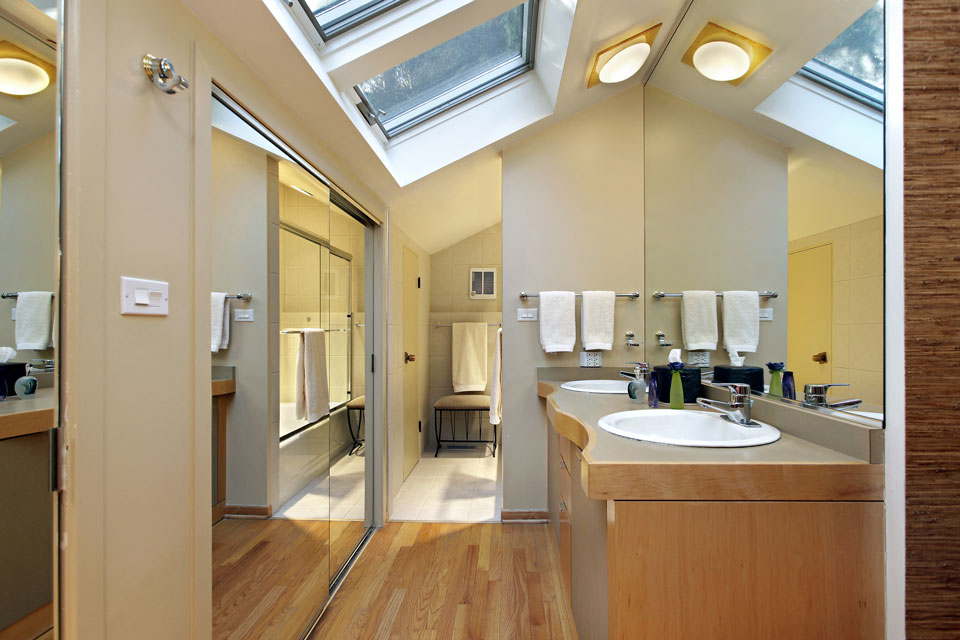
5Make spaces bigger
One of the great inhibitors of natural light in a room is if the space is too small and narrow. The more open a space can be, the lighter it will feel when natural light is flowing into the space from all directions.
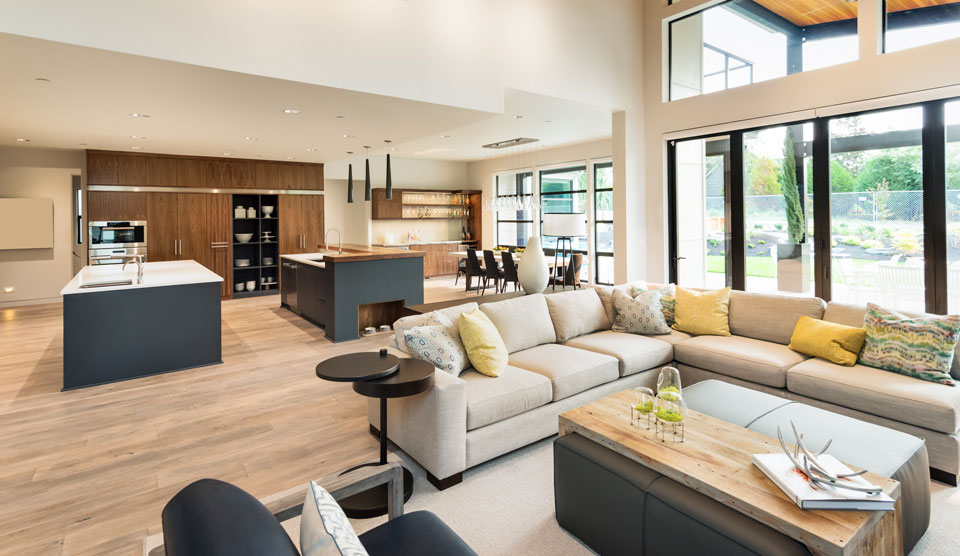
There are three things that you’re able to do in the hope to open a space up. The first is to enlarge. Many older homes especially have single-sized doorways, which are effective at breaking the home up into distinct rooms, but are also cramped. Widening the doorway (perhaps to a double door in size), or making it larger by increasing the height of it, is a very effective technique.
The second is to tear the walls themselves down. If you don’t really need a wall splitting a kitchen and dining room, then get right of it. A single, larger room will be far better lit through the windows, and the secondary benefit is that the space will feel larger and airier as well.

The third, and most popular option in Australia, is to create an indoor-outdoor living area by utilising screen doors effectively. By cleverly designing your screen doors to complement your home’s design, you can ensure your home’s living areas feel bigger while still keeping the wildlife and pests outside

6Add windows wherever possible (and protect your privacy, too)
Some basic logic; the more windows, the more natural light gets into a space. Of course, there are times where we won’t necessarily want windows giving people a view of what’s going on inside; bathrooms and bedrooms are private places, and yet those are the same places where we’ll often want as much light in as possible, because they’re places of relaxation and calm.
There is a solution to all this; high windows, and lots of them. Placing windows up high means that people from the outside can’t get a look in, and yet they still let a lot of natural light in, given that the sun is beaming down light from overhead.
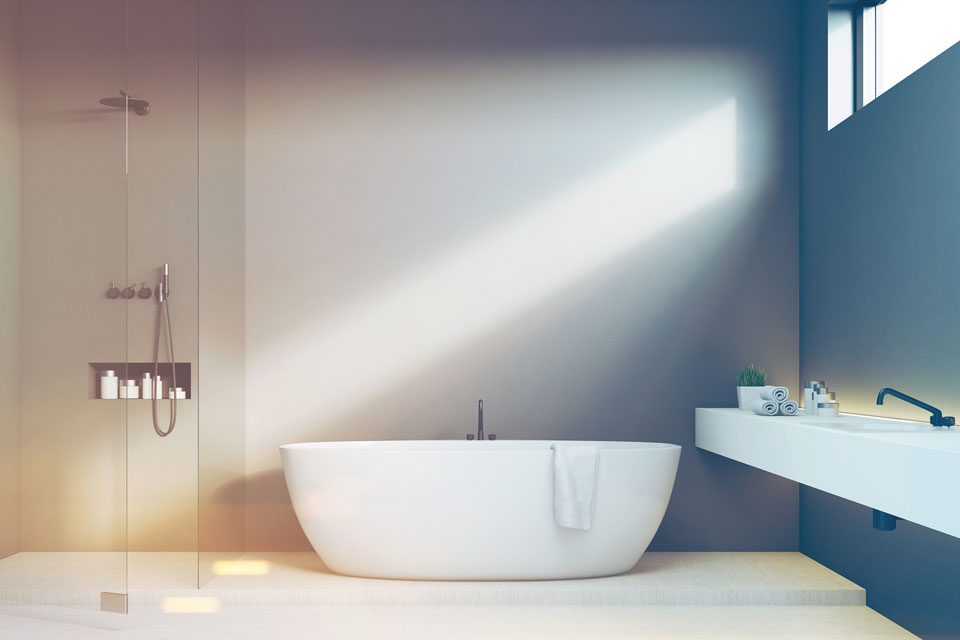
7Use frosted windows
Another popular strategy that will allow you to have all the windows you might want in a home without having to worry about privacy is to make good use of frosted windows. Frosted windows allow in plenty of light, in a diffuse, comfortable way that also prevents glare from getting into the home. And at the same time, they make it impossible to see what’s going on inside from the outside. Making good use of frosted windows will allow you to have a lot of windows facing the outdoors from all parts of the home.
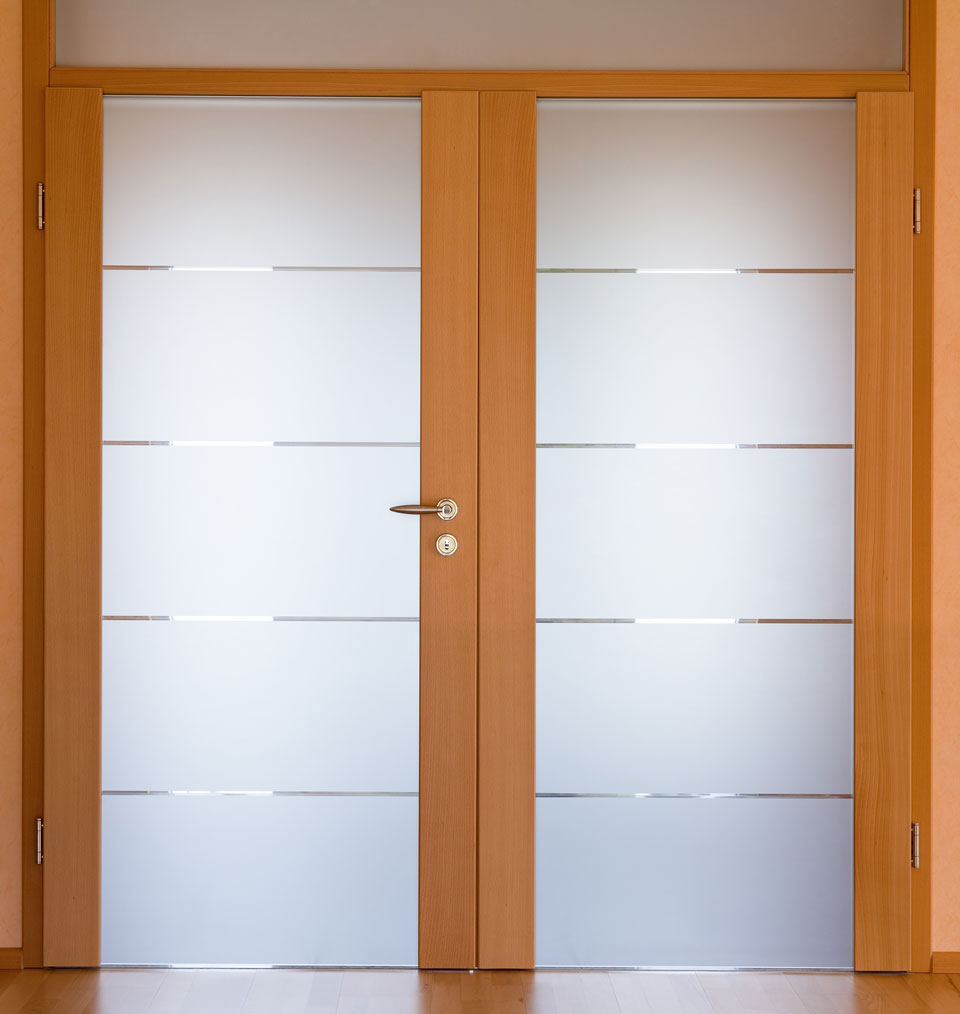
8Maintain your windows and garden properly
This is a simple tip, but it’s one that’s often overlooked, and people then wonder why their home looks gloomy enough that they need to turn on the lights. If you have plants blocking the window, they’re going to limit how much natural light the window lets into the room. Similarly, if you allow the glass to get dusty or dirty, there’s going to be less light that penetrates through into the home.
So keep the windows clean, and while you may well want to have plants around the window, pick plants that are not going to grow in such a way as to start covering the glass; small potted plants or bushes under the window and taller trees on either side are a good example of what to do instead, such as below.
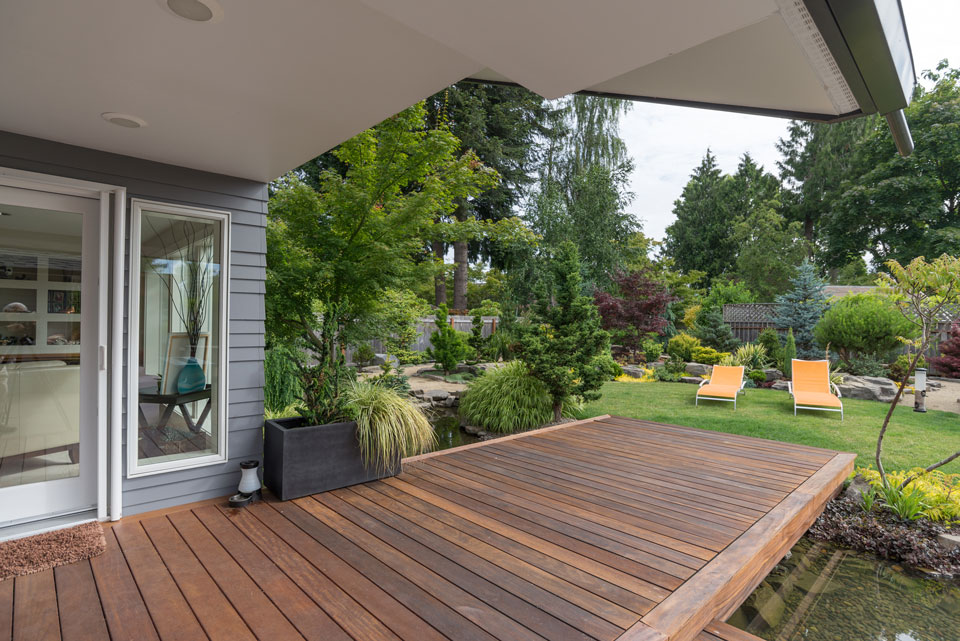
9Celebrate your well-lit home with houseplants
One of the nicest things about having a home properly lit through natural light is that you’re able to then grow plants in the home. Small pot plants or herbs grow readily indoors, and help to emphasise the ambience that the natural light creates. This in turn helps make the room feel open, bright, natural, and relaxing.
Having a sun room in the home, with a nice view of the garden or wilderness, light streaming in from all angles, and plenty of plants lying around, will give you a room to escape to and relax in without actually having to leave your home.

10Make good use of soft light as well
While natural light should be the focus, it’s important to use soft lighting to complement the natural light. Making good use of LED or fluorescent lighting (preferably with dimmers to control how bright they are) can help enormously in brightening up rooms when used strategically. For example, there are likely to be areas in the room that natural light either can’t reach, or can only reach at certain points of the day. At other times, those spaces would been sitting in shadow, which doesn’t help build the ambience of the room. And, of course, once night rolls around, there’s very little natural lighting available at all. Soft lighting can ‘fill’ the shadows and keep the room lit at night. It’s preferable to have a large number of small lights spaced strategically around the room than a single, overbearing light in the centre of the room, as is traditional.
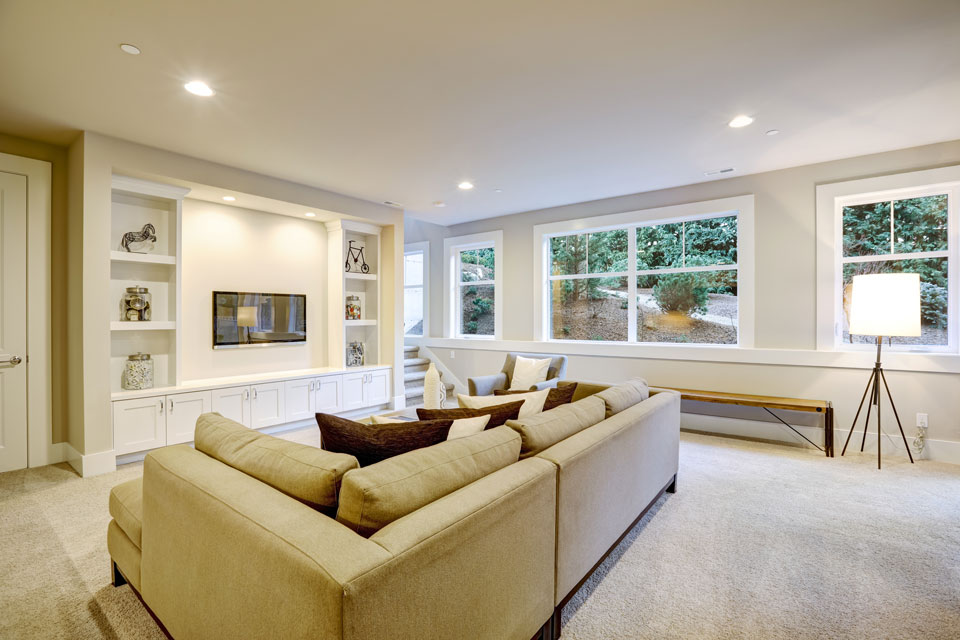
Using beautiful natural sunlight to brighten your home
Every room and home is different, and so your approach to modifying your space to let as much light in as possible will change. The images in this article might be a useful starting place for inspiration, but as with everything in home design - be creative! That way, not only will you get to enjoy the health and lifestyle benefits of having a home that is drenched in natural light, but you’ll also have a home that is a unique architectural masterpiece, which in turn will help its commercial value.
The only thing to be wary of with natural light is that it does have the effect of fading colours over a prolonged period of time. For anything really precious that you don’t want to have damaged by light, it might be important to keep a room or two that aren’t naturally lit (much as they do with museums and art galleries); be sure to look up design strategies for those rooms too, because there will also be steps you can take to make those rooms as beautiful as the rest of your naturally lit home.
If you’re after some interior design inspiration, Georgia Ezra has just released her new ebook, ‘A Healthy Home, A Healthy You’. Take a look here at some professional and creative insight into how having a well-designed home can benefit you both mentally and physically.
A great way to allow natural light into your home without letting in any pests is to have retractable and pleated insect screens for all doors and windows.
Contact us today and get a free onsite quote.
Get my free on site quote
